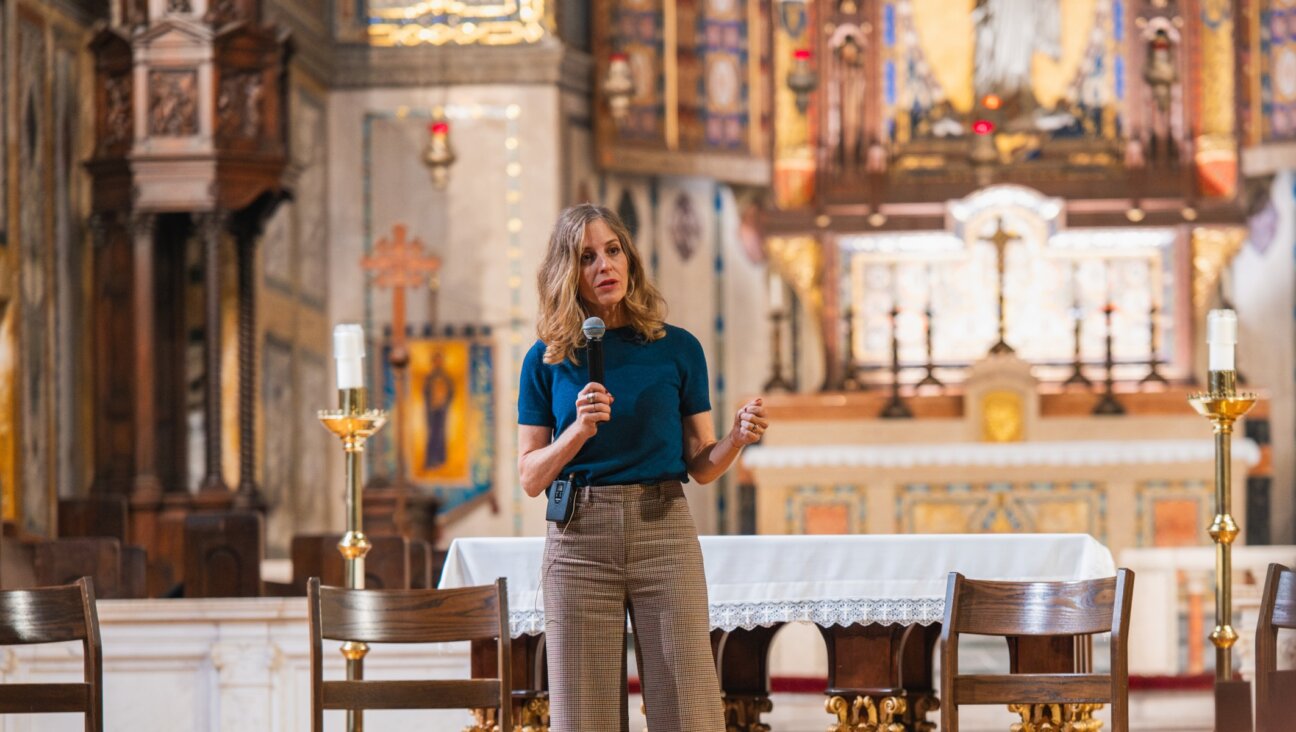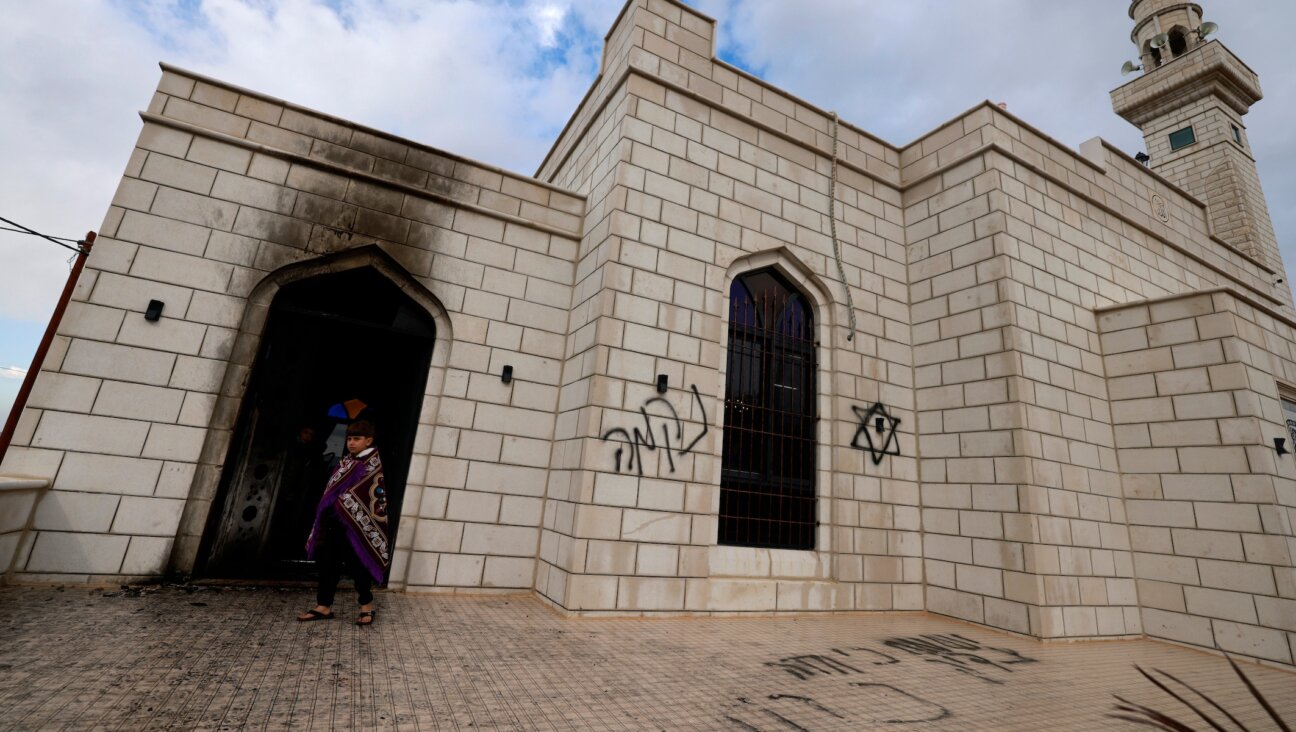Reel Life Inside the Warsaw Ghetto

Image by Courtesy oF BELFILMS
Just months before the Nazis all but emptied the Warsaw Ghetto — sending some 300,000 of its residents to perish at Treblinka — they sent camera-wielding soldiers to capture the increasingly imperiled Jewish community within the ghetto walls. After 30 days of filming in May 1942, the soldiers packed up their equipment; their 62-minute film would forever go unfinished and without a soundtrack. The story of this footage — Nazi propaganda that has been widely used to illustrate ghetto life — is the subject of Yael Hersonski’s new documentary, “A Film Unfinished.” In advance of the documentary’s January 25 world premiere at the Sundance Film Festival, Hersonski, who is 33 and lives in Tel Aviv, spoke with the Forward’s Gabrielle Birkner about what was going on behind the scenes of the film production, the Nazis’ preoccupation with moving pictures and her personal connection to the film.
Gabrielle Birkner: What prompted you to make a documentary about this mysterious, unfinished Nazi film?
Yael Hersonski: I was not thinking only about the Holocaust, but also about [other] catastrophes and atrocities — and what happens when the last survivor is gone and we’re left merely with images and archives. I went to Berlin to study German, and I started to go through the film archive there. I was completely shocked by the existence of this 62-minute film. This film is one of the archive’s biggest mysteries. I said, let’s go into the depth of this mystery because what we don’t know is who made it [and] why it was made such a short time before most of the ghetto’s population would be annihilated.
What was captured in those 62 minutes of footage?
The very crude structure juxtaposes scenes in which you see Jews as if living in luxury with scenes of poor people who are dying in the street, while people in suits and dresses are walking by and don’t even bother to look at them.
What I thought I was seeing when I saw this film for the first time was staged scenes juxtaposed with documentary scenes. But even the documentary scenes were staged, in the sense that the Nazis controlled the area inside the frame: They stopped traffic and chose the people they wanted to walk inside the frame, telling them, “Do not look at this dying man.” When you see women descend into a [Jewish] ritual bath, naked, my aim was to remind people that they were surrounded, outside the frame, by men in uniforms, cameras and guns pointed at them.
Is their fear at all palpable?
Yes. What the Nazis couldn’t control is the expressions of panic, of fear in people’s eyes. They couldn’t control the most individual thing about a human being, which is his gaze — and that is where you can see reality entering the staged propaganda image.
How did you discover what was actually happening outside the frame?
The point of view of the film comes from three main sources. First, the survivors — four women and one man — from the Warsaw Ghetto, who remember watching the crew in action from their hiding places. Then we presented texts written by Jews during the days of the filming — personal diaries that were hidden underground and dug up after the war. And the other side of this was the description of the filmmaking from one of the cameramen himself.
There are also outtakes, discovered by accident in ’98 at a U.S. Air Force base. And inside these outtakes you can see the film crew in action, so it adds another visual layer.
Why do you think the Nazis were intent on filming the Warsaw Ghetto?
Four days before the Nazis began filming, Joseph Goebbels [the Nazi propaganda minister] wrote in his diary that they were about to resettle the Jews — of course, “resettle” was just a nice word for something else — and it’s very urgent to document the last chapter of this race, and that it will serve future generations to show them what they had to remove from this earth. So maybe it was for the archives of the future, an attempt to produce history while it was in motion.
Has this Nazi film, or portions of it, been widely viewed?
Every time a filmmaker makes a Holocaust documentary, he buys bits and pieces of the film to illustrate his story. I’ve seen museums use it to show how Jews were living in the ghetto. Because if someone wants to talk about Jewish life inside the ghetto, the only footage he has to use is the Nazi footage — so he uses it. But the last thing we’ll think about when we see it inside a museum is that it is [filtered] through the eyes of a propaganda film crew.
In the process of making your documentary, what did you learn about the Nazi preoccupation with film?
World War II marked the beginning of systematic documentation of atrocities on film, and the Nazis, especially, were obsessed with the camera. Their propaganda was extremely advanced, and they positioned filmmaking in a very central place in that. They had film crews and they had helicopters to ship materials that were photographed at the front. During the last days of the war, when Berlin was bombed, 90% of Nazi documentation was destroyed. And the 10% that remains is a main part through which we remember history.
Was your desire to know more about this 62-minute film driven by any personal connection to the Holocaust?
My [maternal] grandmother — she was 19 at the time — was actually living in the Warsaw Ghetto with her parents, so I was looking for her throughout the whole time I was working on the film. Even though I didn’t find her, just knowing that she might have been across the street or two meters outside the frame was enough for me to recruit the strength to work in front of these images for such a long time.
Have you ever spoken with your grandmother about what life was like inside the Warsaw Ghetto?
She died four years ago. And after she died, I realized that I was always asking her questions that focused on some part of her life — but I never asked about the Warsaw Ghetto.
So I wanted to discover something about her reality. She was my emotional motivation, but she is not in my film, at all. This is not my story; this is the story of the film and the story of the place it was documenting.
Also at Sundance:
• From Ricki Stern and Annie Sundberg, the duo behind the 2007 documentary “The Devil Came on Horseback,” about the genocide in Darfur, comes “Joan Rivers: A Piece of Work,” which chronicles the pioneering female comedian’s 76th year of life.
• In “Holy Rollers,” Jesse Eisenberg (“Zombieland”) plays a young Brooklyn Hasid torn between the secular and religious worlds after he is recruited to smuggle drugs between New York and Amsterdam.
• Ramallah-based filmmaker Raed Andoni’s attempt to find the source of, and the cure for, his persistent headaches becomes a metaphor for the stresses and constraints of Palestinian life in the West Bank in “Fix Me.”
A message from our Publisher & CEO Rachel Fishman Feddersen

I hope you appreciated this article. Before you go, I’d like to ask you to please support the Forward’s award-winning, nonprofit journalism during this critical time.
We’ve set a goal to raise $260,000 by December 31. That’s an ambitious goal, but one that will give us the resources we need to invest in the high quality news, opinion, analysis and cultural coverage that isn’t available anywhere else.
If you feel inspired to make an impact, now is the time to give something back. Join us as a member at your most generous level.
— Rachel Fishman Feddersen, Publisher and CEO























